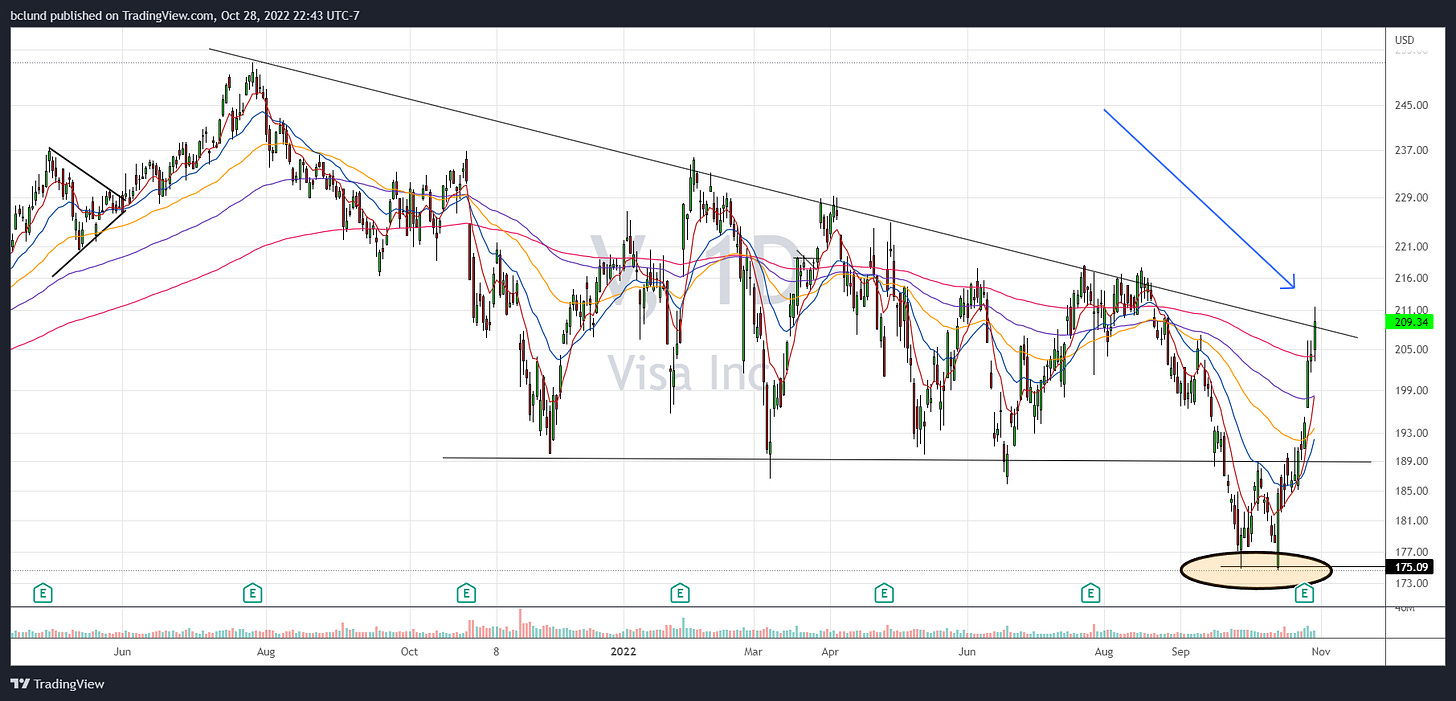For the past month or so, I’ve been telling you that the market feels like it’s in the process of bottoming.
Trying at least.
When money is on the line we do our best to filter out emotions, gut instincts, and feelings, but not unlike recessions, market bottoms can only be confirmed after the fact, not in real time.
Yet, those of us whose calendars are brimming over with soirées, tête-à-têtes, elegant salon discussions, and shithoused shit-talking at local dive bars are obliged to weigh in on the topic, lest we be supplanted by some up and coming market savant or savantess.
So let’s do this.
Here are my top 9 reasons that the stock market may have bottomed.
Bear markets occur when stocks go down. They end when stocks go back up. However, before they do, they have to stop going down. That’s what happened in June - stocks stopped going down. That’s when the 52-week lows list peaked, or bottomed, depending on your viewpoint. And now a lot of them are starting to go back up.
But not all of them. And that’s okay. The market is a forward-discounting mechanism. Right now it’s trying to determine which stocks will be higher in 18 to 24 months. It’s a tricky business. Messy actually. With lots of stops and starts. But for the first time in a long time, instead of seeing everything go down, we’re seeing the type of bifurcation that is the hallmark of the bottoming process.
Cramer cried on live TV.
The VIX is starting to act normal again. For much of this year, the price action in the VIX defied traditional logic, alternatively diverging and hibernating in the face of price action that should have sent it towards a different outcome. Cries of “The VIX is broken” echoed throughout the land, a statement to which I plead guilty. All is right with the world, for the time being at least, as the VIX is currently moving down when the market moves up.
Despite being barely two years removed from the fastest bear market resolution in history, the fact is, bear markets resolved incrementally. First, they recapture the 8EMA, then the 21EMA. Along the way, they break through former support, now resistance levels, lay waste to pivot points, and end up on the north side of the 50, 100, and 200EMAs.
Currently, all four of the main indexes/ETFs are above their respective 8 and 21EMAs, but the DJIA is the golden god of the group, having slayed all the technical dragons, and now sitting comfortably above the all-important 200EMA.
Next up is the IWM, the broadest index I track, which just this week pulled off a hat trick, breaking above resistance, two pivot points, and the 100EMA.
Everybody’s favorite benchmark is up next, and it ain’t no slouch, delivering a respectable, though slightly less impressive trifecta of its own this week, taking back a resistance level, a pivot point, and the 50EMA.
Lastly, we have the laggard of the bunch, which takes us to reason number six.
Yes, the Nasdaq - via QQQ proxy - is underperforming in one sense, but in another, especially given the week we just had, it’s hanging in there like a champ. Disappointing earnings from META, GOOGL, and AMZN couldn’t take the Naz below last week’s pivot low, let alone the major low on October 13th. Then as it is wont to do, AAPL came in and saved the day, rocketing 7.5% after earnings, the biggest one-day jump since 2020.
Cramer cried on live TV like the infotainment clown he is and always has been.
Not only are key financial stocks holding their recent gains, but they’re also breaking downtrends and reclaiming 200EMAs in the process. It’s hard for the market to go lower when financials are rallying. True, these are still considered countertrend rallies in a bear market, but if we decisively clear and hold the mid-August highs, it’s game fucking on.
Did I mention that Cramer cried on live TV?
———————————
P.S. It should go without saying - but I’ll say it anyway - all opinions expressed in The Lund Loop are my own personal opinions and don’t reflect the views of my employer, any associated entities, or other organizations I’m associated with.
Nothing written, expressed, or implied here should be looked at as investment advice or an admonition to buy, sell, or trade any security or financial instrument. As always, do your own diligence.












